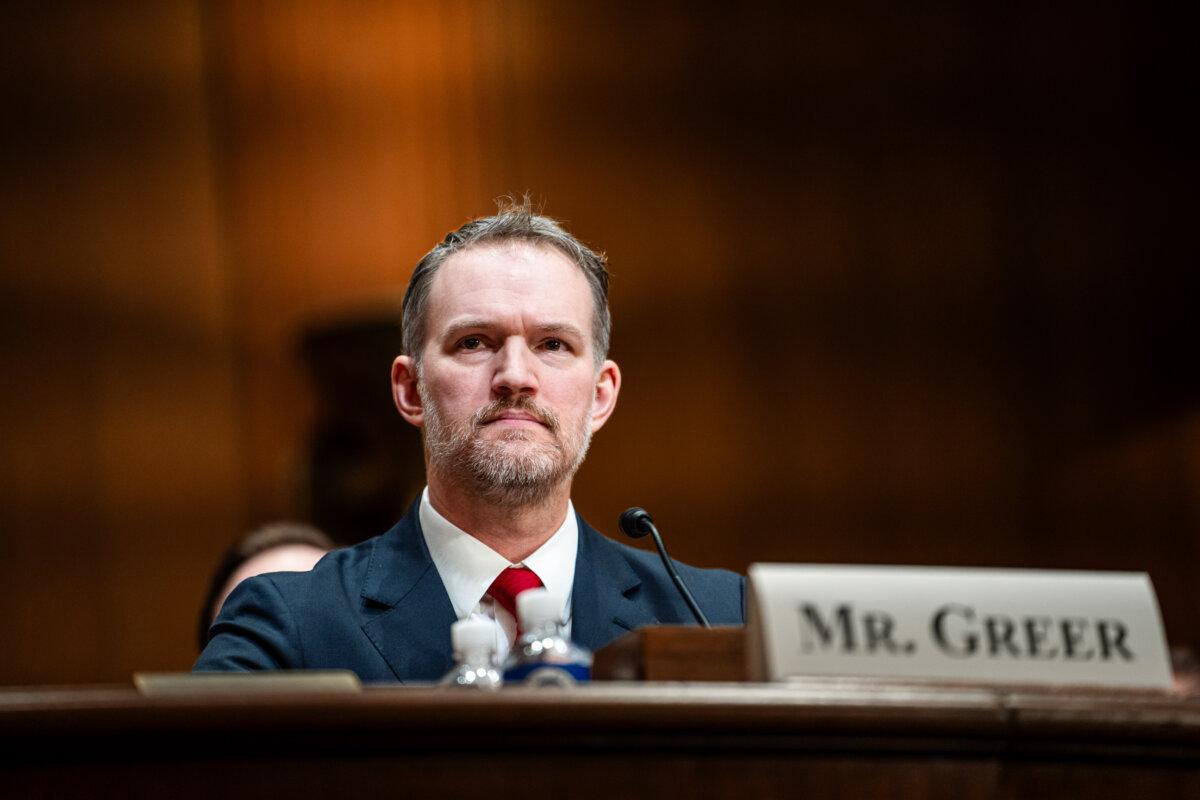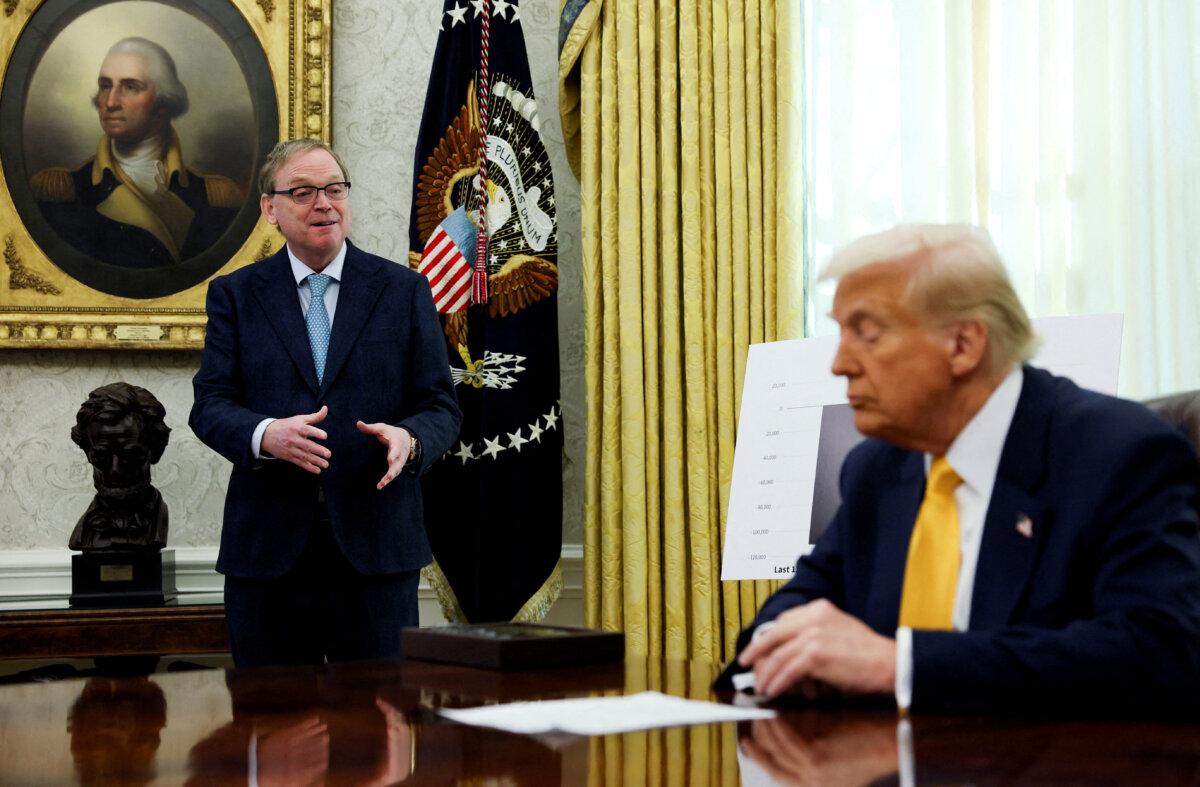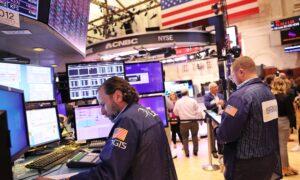After weeks of anticipation, the White House is ready to unveil Trump’s reciprocal tariff plans.
April 2 will be America’s “liberation day,” President Donald Trump says.
The president is set to unveil his administration’s reciprocal tariffs on U.S. trading partners. This initiative is to feature the United States matching tariff rates set by other countries on American goods.
“If they charge us, we charge them,’’ the president said in February. “If they’re at 25, we’re at 25. If they’re at 10, we’re at 10. And if they’re much higher than 25, that’s what we are too.’’
In recent weeks, Trump and other White House officials have given hints about what to expect. Whatever happens, Trump has touted April 2 as the day that the United States will get its “money” and “respect” back after decades of being “ripped off and abused by every nation in the world—both friend and foe.”
Why Trump Is Imposing Reciprocal Tariffs
According to Commerce Secretary Howard Lutnick, the president’s second-favorite word is “reciprocity,” with “tariff” as his top word.
In February, the president announced his “fair and reciprocal” plan, a comprehensive strategy to restore fairness to international trade and counter a diverse array of trade barriers erected by America’s trading partners.
The Trump administration alluded to various examples of countries implementing high tariff rates on U.S. goods, which together place American businesses at a disadvantage on the world stage.
Brazil, for example, imposes 18 percent levies on U.S. ethanol exports. By comparison, the U.S. tariff rate on ethanol is 2.5 percent.
The European Union maintains a 10 percent import duty on imported automobiles. Conversely, the United States manages a 2.5 percent tariff rate.
But while U.S. officials have emphasized the importance of matching tariff rates imposed by other nations, the administration is also assessing other non-tariff trade barriers.
“We are going to go to them and say, ‘Look, here is where we think the tariff levels are, nontariff barriers, currency manipulation, unfair funding, labor suppression. And if you will stop this, we will not put up the tariff wall,’” Bessent said.
The report alluded to Canada’s supply management system for its domestic chicken, egg, dairy, and turkey industries, concluding that the United States is concerned about limited access for U.S. farmers.
“The United States also remains concerned about potential Canadian actions that would further limit U.S. exports to the Canadian dairy market and continues to monitor closely any tariff reclassifications of dairy products to ensure that U.S. market access is not negatively affected,” the report stated.
Officials also identified a long list of grievances regarding communist China’s policies, including investment barriers, state-owned enterprises, data restrictions, and anti-competitive practices.

Nominee for the U.S. Trade Representative, Jamieson Greer, testifies before the Senate Committee on Finance on Capitol Hill in Washington on Feb. 6, 2025. Madalina Vasiliu/The Epoch Times
It is unclear how this in-depth report will influence Trump’s reciprocal tariffs. However, U.S. Trade Representative Jamieson Greer lauded the president for recognizing “the wide-ranging and harmful foreign trade barriers American exporters face.”
“Under his leadership, this administration is working diligently to address these unfair and non-reciprocal practices, helping restore fairness and put hardworking American businesses and workers first in the global market,” Greer said in a statement.
Countries Bracing, Markets Reacting
Speaking to reporters aboard Air Force One on March 30, Trump stated that all countries would be subject to reciprocal tariffs—not just the so-called “Dirty 15.”
While nations have yet to issue retaliatory measures against the president’s reciprocal tariff plans, experts say the initiative will overhaul decades of trade policies, agreements, and relationships—deals that Trump call “lopsided.”
Canadian Prime Minister Markey Carney recently declared that the “old relationship” between Canada and the United States “is over.”
Financial markets have been watching the events unfold, causing panic on the New York Stock Exchange.
Wall Street has been hammered this year as investors fear tariffs could fuel a recession and revive inflation threats. The tech-driven Nasdaq Composite Index has declined about 10 percent. The broader S&P 500 has tumbled nearly 5 percent. The blue-chip Dow Jones Industrial Average has been flat.
Goldman Sachs recently revised its year-end estimate for the S&P 500 from 6500 to 6200, indicating a 7 percent gain in 2025.
“The headwinds to equity valuations from a spike in uncertainty are typically relatively short lived,” said Goldman Sachs Research Chief U.S. Equity Strategist David Kostin in a note to The Epoch Times. “However, an outlook for slower growth suggests lower valuations on a more sustained basis.”
“U.S. real GDP will slow considerably in early 2025, and a quarter of negative growth is possible,” said Bill Adams, the chief economist for Comerica Bank, in an emailed note to The Epoch Times.
The drag on growth is based on temporary factors that will diminish in the coming quarters, Adams added.
“As far as tariffs go, it’s hard to say how they will change the U.S. economy, in large part because we don’t know what the policy will be yet,” he said.
Kevin Hassett, the director of the National Economic Council, says the stock market has been overreacting to Trump’s tariffs.

White House economic adviser Kevin Hassett speaks next to President Donald Trump in the Oval Office in Washington on March 7, 2025. Leah Millis/File Photo/Reuters
To kick off the trading week, the leading benchmark averages performed a stunning reversal, with the Dow Jones surging more than 400 points, or 1 percent. The Nasdaq pared most of its losses, and the S&P finished in positive territory by adding 31 points, or 0.55 percent.
Consumers Are ‘Tarrified’
Economists have debated how much of an impact tariffs will have on the economy. Consumers, however, are anticipating adverse effects from the administration’s adjustments to trade policy—and this sentiment could weigh on their spending habits.
Over the last two months, a wide range of surveys have indicated eroding consumer confidence and rising inflation expectations.
“While consumers kept spending openhandedly in recent years, despite downbeat survey responses, the latest data look different,” Adams said.
But while consumers maintain a gloomy outlook, many economic observers have shrugged off the inflation threat, pointing to Trump’s first term when his initial round of levies did not stoke enormous price pressures.
Wholesale prices surged in 2018 and 2019 but businesses largely avoided passing costs onto consumers.
“Markets seem preoccupied with the inflationary impact from rogue tariffs,” said LPL Financial’s chief economist, Jeffrey Roach, in a note to The Epoch Times. “From lessons learned during the 2018 tariffs, consumer prices may not reflect the full cost of a tariff, although somebody must bear the burden.”
Bessent has regularly dismissed inflation concerns.
Last month, the veteran hedge fund manager stated that Trump’s tariffs will unlikely rekindle the inflation flame, partly because China will “eat any tariffs that go on.”
“They will eat any tariffs that go on.”
As for projections on consumer prices, the estimates vary.
Last week, the Fed’s preferred inflation measure spooked investors. The personal consumption expenditure (PCE) price index for February was unchanged at 2.5 percent. Core PCE, which omits the volatile energy and food categories, edged up to a higher-than-expected 2.8 percent.
More Tariffs Are Coming
Trump has stated that his reciprocal tariffs would stack on top of existing taxes on goods coming into the country.
But will this be the end of his tariff threats? Based on the president’s previous public comments, further levies could be on the way.
Prior to laying out his 25 percent tariffs on foreign automobiles and car parts entering the United States, Trump noted that he plans to introduce import duties on lumber, pharmaceuticals, and semiconductors.
“So we’ll be announcing some of these things in the very near future, not the long future, the very near future,” Trump said at a Cabinet meeting.
Original News Source Link – Epoch Times
Running For Office? Conservative Campaign Consulting – Election Day Strategies!


